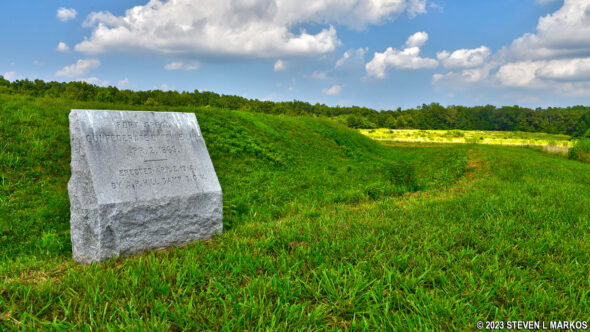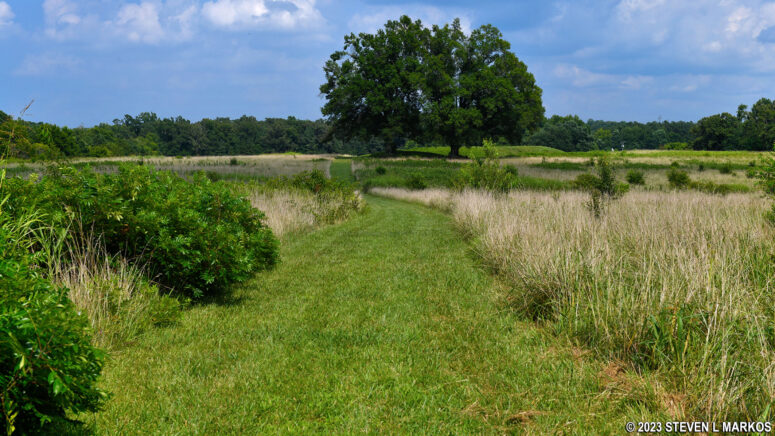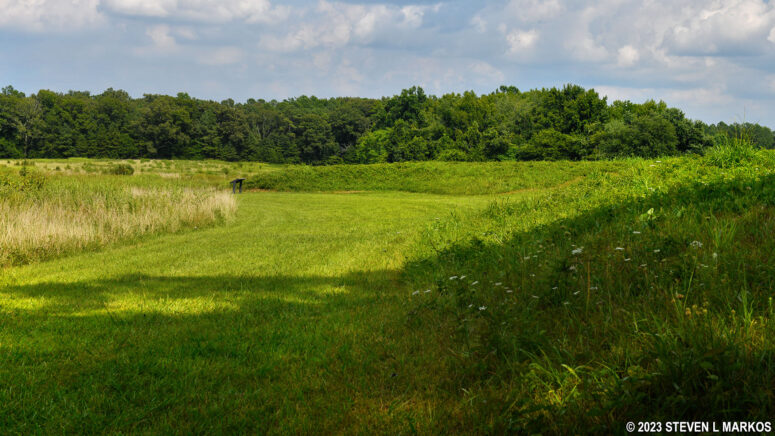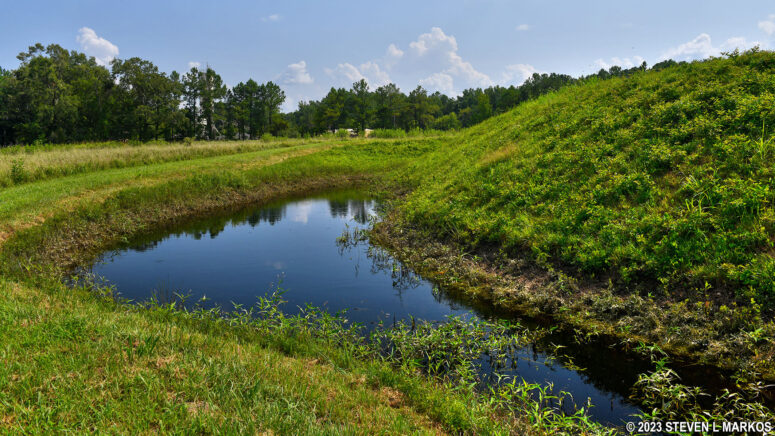WESTERN FRONT DRIVING TOUR
STOP 4: Fort Greg
Allow 15 minutes for a visit
The last stop on a tour of the Western Front unit of Petersburg National Battlefield is Fort Gregg, a Confederate fort that was part of the outlying defenses of Petersburg. When the Union launched its final assault on the city on the morning of April 2, 1865, the 300 men in Fort Gregg were attacked multiple times by 5,000 Union troops. They were actually able to hold back two Union charges, but the fort was ultimately captured by the end of the day. However, delaying the Union advance gave General Robert. E. Lee more time to plan his retreat, and later that night the Confederate army abandoned Petersburg, quietly marching across the Appomattox River on bridges still in their control. Around 250 of the Confederates at Fort Gregg were killed or wounded.
From the Fort Gregg parking lot, it is a 300-yard walk along a mowed grass path to what remains of the fort. There is a loop at the end that circles around the fort grounds. Wayside exhibits in the parking lot and at the fort tell about the events that took place here.
The hills you see are the remnants of the fort’s earthen walls. The way forts were built, dirt was dug and piled high to create a wall. The ditch where the dirt came from formed a moat. Enemy troops storming the fort walls had to first deal with the ditches, which were deep and usually filled with obstacles such as rain water or sharpened logs called abatis.
Earthen forts, not masonry forts, were built at Petersburg because they could be quickly constructed. Furthermore, earth actually offers better protection than masonry from incoming cannonballs, for the metal balls are absorbed into the dirt upon impact instead of shattering the stone or brick. The earthen walls at Fort Gregg were much taller and the ditches much deeper in 1864. Two hundred and fifty-plus years of erosion have taken a toll on the fort, filling in the ditches and whittling down the walls to what you see today.
Stop 3: Fort Fisher | Western Front Tour Home Page
With a few exceptions, use of any photograph on the National Park Planner website requires a paid Royalty Free Editorial Use License or Commercial Use License. See the Photo Usage page for details.
Last updated on March 28, 2023






